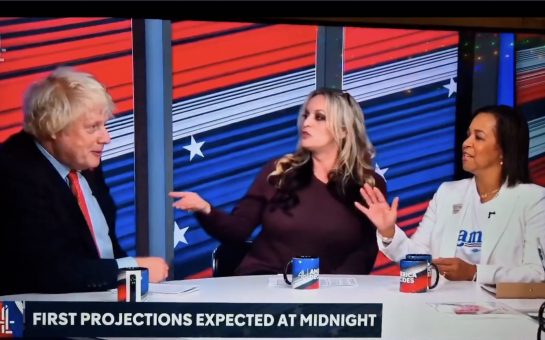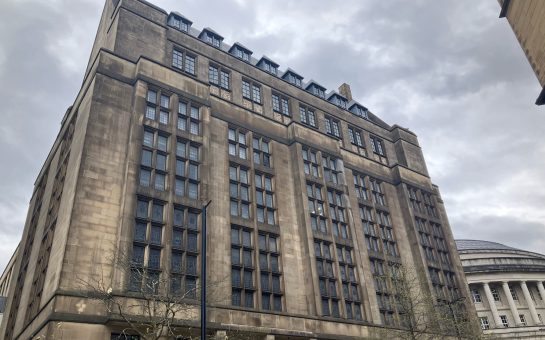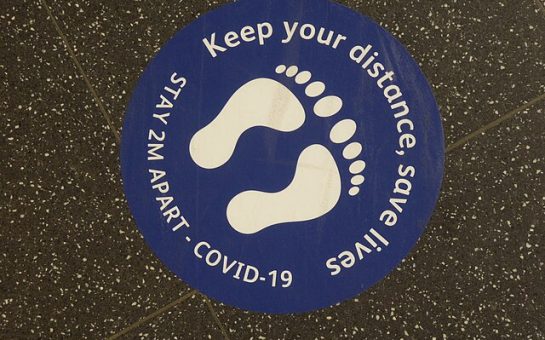On Sunday 10th May, Boris Johnson addressed the nation he had put under a historic house arrest seven weeks earlier.
Broadcast simultaneously across six channels, a total audience of 27.6 million watched him promise to ‘follow the science’, rivalling that of England’s World Cup win or Princess Diana’s funeral.
But what is the science? Should we really be treating a small group of Government scientists conclusions as objective truth, when not only are others in stark disagreement, but their own findings are riddled with inconsistencies?
Land of the normal
To begin with, we need to venture in our Tardis back to a time before life as we know it; March. Five days before the Cheltenham Festival hit the ground running, here we clearly see minutes from SAGE meetings the 5th March stating “there is no evidence to suggest that banning very large gatherings would reduce transmission”. But this dates back further. The UK Pandemic Preparedness Strategy, which was written in 2005 and updated in 2011, isn’t just sceptical about social distancing, but goes as far as discouraging outlawing mass gatherings as they ‘may help maintain public morale’. The plan was clear, shield the vulnerable and let the rest of us carry on with our lives. But all this was about to change…
U-Turn
Fifteen years of planning were suddenly thrown out of the window. A report from the Centre for Infectious Disease Modelling at London’s Imperial College changed everything. Spear-headed by Professor Neil Ferguson, this set off alarm bells at Whitehall, with the ominous warning that as many as half a million people could die as a result of the NHS being overwhelmed. Boris was forced to bring the shutters down for three weeks on March 23rd with the words “To put it simply, if too many people become seriously unwell at one time, the NHS will be unable to handle it”. We were told we had to ‘stay at home to save lives’ and ‘flatten the curve’.
The Nutty Professor
Three weeks have become three and a half months, and the NHS has never been close to becoming overwhelmed. In fact, there’s been a 53% reduction in the amount of patients coming through A& E. Health Secretary Matt Hancock’s rallying cry to industry bodies to produce 30,000 ventilators was never needed; at our peak in April the NHS was only using 3,301 out of the 9,000 we already had. The Nightingale Hospitals lay mostly empty, and are now being used to catch up on missed cancer testing.
On 2nd June, Professor Ferguson admitted that Sweden had used the same science as the UK, yet unlike us they chose not to lock down, keeping offices, schools, restaurants and bars open. Puzzlingly, their death rate per million is 477, lower than our figure of 608. Belgium, who implemented one of the strictest lockdowns, has suffered 823, the highest in the world. Figures from the Swedish Public Health Agency suggest that applying Ferguson’s modelling to Sweden would have seen 75 times the number of deaths.
What I don’t understand is why we put our trust in this mad modeller in the first place? Looking at his track record, he’s been way off the mark on virtually every pandemic he’s meddled in. In 2009 he projected 63,000 UK deaths from Swine Flu, yet the number ended up standing at 457. For the mad cow’s disease (BSE), he cautioned that 136,000 could die, but only 177 did. If this wasn’t enough, he got the whole world in a flap in 2005 when he predicted that 200 million would die. The death toll was 243. I think, perhaps, he must have caught the mad cow’s disease himself and omitted the E in BSE! It’s the only explanation for it.
There’s something insidious about the way that the model was cobbled together. Ferguson chose not to release it to the science community until we were on our sixth week of lockdown. With a country scared witless over the virus, this time it was the scientists turn.
Chris Von Csefalvay, a fellow epidemiologist described the code he used to programme his models as ‘somewhere between negligence and unintentional but grave scientific misconduct’. Computer science modelling expert didn’t hold back either: “This Ferguson Model is such a joke it is either an outright fraud, or it is the most inept piece of programming I may have ever seen in my life”. A further four scientists chorused their concerns about it in an article in The Telegraph written the following week.
If this wasn’t enough, Ferguson clearly had little confidence in his own measures he helped introduce. On 5th May, he stepped down in shame, having been exposed for flouting the rules in the form of a secret illicit rendezvous with a married woman.
Staying apart not so smart?
What have we become? You can hardly walk down the street now without people diving out the way!
But rather than protecting ourselves, could we be cutting our noses off to spite our faces? According to Sunetra Gupta, professor in epidemiology at The University of Oxford, social distancing may reduce the capacity of our immune system to cope with viruses when we do encounter them. She explains that this was the case in the 1918 Spanish Flu. Before access to air travel, Europe’s population hadn’t had exposure to a similar pathogen for 30 years, resulting in a huge shock to the system. In this way, our ability to fight a virus relies on how acclimatised our immune system is to fighting similar strains. If we isolate ourselves from all of them, we are ‘like clumps of trees waiting to be set ablaze’. As Dr. Chris Barnes, a leading consultant with 40 years’ worth of experience in biosciences warns: “We need to start mixing and shaking hands again soon too. Otherwise all immunity will be lost and even the common cold will kill us”.
This is notwithstanding group research from Germany’s Tubingen University which discovered that training our white blood T cells to resist the common cold is likely to offer us protection from Covid-19. Here, 81% of participants who had not fallen ill with the virus had a T cell response for it, after exposure to a cold. If this is right, then it also suggests that there’s more immunity out there than just antibodies- Why have we seen cases fall so rapidly even after mass protests in June?
Not only has this, but the two-metre rule, a plague in itself for education and businesses, had no basis in science. Two other Professors from Oxford, Carl Heneghan and Tom Jefferson reviewed 172 studies and found no impact with coronavirus infection in relation to distance, judging that these formalised rules were ‘poor quality’ and instead we need to wash our hands. Encouragement and hand-washing are what we need, not formalised rules. The proof is in the pudding; Sweden which has used common sense rather than a hard and fast rule, has followed a similar trajectory as us.
Covering up: A political smokescreen?
With the Government announcing that they’re following Scotland and turning us all into Darth- Vader lookalikes doing our shopping, could the whole concept of wearing a mask for protection be fantasy fiction itself?
From the WHO to Chris Whitty, Matt Hancock and Jonathan Van Tan, all have assured us that they’re of little effect, only to flip-flop. After frightening the population half to death with the ‘stay home’ message, Boris said they could be used as a tool to ‘reassure people that it’s safe to go back to work’. In this way, it’s quite possible that they are a political tool to counter the psychology of a nation and justify sending them back to work. The placebo effect.
According to Dr. R Macintyre, a professor in infectious diseases, the virus particles are too small to be stopped by face mask filters, and this, along with leakage around the edges mean that up to 90% of the airbourne particles can get in. Useless.
But what if they could actually cause us harm too? Dr. Jenny Harries (who you may have seen on the Daily briefings) has signalled that they could trap the virus, making it more concentrated. As she points out, people aren’t going to wear one all the time. If for example, they go for a coffee somewhere, they’ll put it down on a surface which could be contaminated. Putting the mask back on is therefore the perfect setting for directly breathing it in: “For the average member of the public walking down the street, it is not a good idea”. The Neurosurgeon, Dr. Russel Baylock reiterates this, alerting us that mask-wearers “will be constantly rebreathing the viruses, raising the concentration of the virus in the lungs and the nasal passages”. Baylock also advises urges us to consider that those who suffer the severest symptoms have more concentrated exposure early on.
In spite of this, Both the WHO and the UK Government are coming round to the idea, and from 15th June, it’s been compulsory to wear a face covering on public transport, with Health Secretary Matt Hancock adding that the science is constantly changing. However, five days after this, on the 20th June, the official HM Government advice acknowledged that ‘evidence of the benefit of using a face covering to protect others is weak’. Not only this, but the WHO’S current position was released last month. Mask wearing is “not yet supported by high quality or direct scientific evidence”, also admitting that they can cause breathing difficulties, skin lesions and discomfort, as well as waste management issues with them.
R for Red Herring?
Cast your mind back to the 5th June. Official statistics showed that infections had more than halved that week, from 133, 000 to 53,000. But in the same week, we had experts and politicians lining up to council us that the R rate, the rate of which the virus is spreading, was at risk of exceeding 1. If you’re not familiar, a rate of 1 means that one person can ‘potentially’ infect one other person, meaning that the virus is plateauing. Anything below this, the virus is in retreat, but any number above this, its flexing its menacing tentacles and increasing…
But pitted against the pattern of infections since the April peak, and using the first week of June as an example, infections have been on a consistent descent, so why isn’t the R number? Well, again, it’s in the hands of mathematical models (remember how that worked out last time!). There are no less than five modelling groups which come together for a consensus as to what the R rate should be. Sir Patrick Vallance explained recently that they form their assessments after looking at contacts relating to cases. So if you’ve been in proximity to someone, you could count as one of many ‘potentials’, even if you haven’t tested positive, or tested at all.
Dr. Mark Woolhouse from the University of Edinburgh announced in May that the R number ‘glosses over’ the distinction between cases in the community, care home and hospital settings. He remains convinced that keeping it below the magic level of 1 is good policy: “the interpretation of it is it’s a very nuanced quantity and you have to dig a lot deeper”.
Last month The Telegraph published an article which claimed that a senior Government scientist had urged media outlets to hold fire on reporting the R rate as they don’t offer indications on the size or speed of change, only the direction. Looking at the trends, it seems that a low number of cases can render the number to be highly volatile. An outbreak at a single German meat factory in North-Rhine Westphalia pushed the whole country up to 2.88. London, which recorded not a single case on 20th May, made it susceptible to a huge surge in the rate once new cases were registered. Dr. John Lee (A pathology professor, not the bloke from S club 7) blasted concept of the R number as less reliable than a long term weather forecast, contending that the ‘assumptions central to the models’ are flawed. Perhaps Sir Patrick Vallance is the Michael Fish of 2020, but in reverse.
Till Death
Covid-19 has been painted as an aggressive ‘invisible killer’, ripping its way through the population like the mediaeval black death. It’s true that in the UK, at time of writing, 44,830 in the UK have died, also testing positive for the virus. However, how do we know that it was Covid which killed them, and not something else?
Getting hold of stats for England only, we know that 27,619 out of 28,993 had underlying health conditions. It may be difficult to tell how far Covid is responsible for these, but equally, of the 1,374 who didn’t, how do we know that they didn’t have an illness which wasn’t known? The data records the majority of deaths in the 80+ age bracket.
The Oncologist, Professor Karol Sikora provided an altogether different if not controversial slant, asserting that many of those who died from coronavirus would have died soon from other causes. His critics called this insensitive, but after high rates in spring, deaths for June and July have started to dip below the baseline against the five year average.
Considering we’re in the middle of a pandemic, a lower than normal rate now doesn’t make sense. Moreover, access to treatment for other conditions have been restricted by lockdown. Urgent cancer referrals are down by 300,000 and 28,000 cardiac procedures have been delayed, resulting in higher than normal deaths in the community. These are pushing the death rate up, but the numbers are still slightly lower than the five year average, for example the week ending July 3rd saw a drop of 43.
An often overlooked consideration is how many people who die would also test positive for other viruses. Two years ago, during the harsh winter of 2017/2018 (Remember ‘The beast from the east’), 50,000 excess deaths were recorded. I don’t remember any calls to lockdown the country then.
On 19th March, Public Health England assessed Covid-19 to be ‘no longer considered a disease of high consequence in the UK’. What’s more, a study by Dr David M Patrick et al found that the common cold has as much as a 6% death rate in vulnerable groups of people. To the population as a whole, the death rate has been revised down from a sensationalised 3.4% from the WHO, to 0.67% from Imperial College London, and the US Center for Disease Control now place it at 0.26%. Following the case, the writer Toby Young predicts that it will settle at around 0.1%.
Official Government figures reveal that 78% of those who test positive show no symptoms. And of the 22% who do, Chris Whitty has told us “ the vast majority will have a mild or moderate disease. The great majority of people, even in the highest risk groups, will not die.” The immunologist Professor James Delingpole puts this in perspective, stating that there was ‘nothing special’ about Covid-19.
A happy ending?
Rather than a soul-sucking dementor or dastardly darlek, Covid-19 could be nothing more than a Disney dormouse, habituating in the land of mythical political science.
As the scientist and Nobel Peace Prize winner Michael Levitt muses, exaggerating the impact of a disease ‘poses less risk to professional reputations’ than understating it. The panic created by Professor Ferguson no doubt played an integral part in the hurry to discharge untested hospital patients back to care homes. The epidemic in settings like these has played havoc with the make-believe R number, which the Government and media has gradually socially distanced itself away from (In Leicester the focus seemed to be on the number of cases).
As the Businessman Luke Johnson said “Full blown lockdown has such a vast cost in terms of collateral damage, its promoters among the media, politicians and SAGE will never admit it was a mistake. Their reputations and self esteem would be shredded. So they will defend it despite the great harms”.
So when we pull the face masks off, the real villains could turn out to be the same proclaiming to read out of the storybook of science. But unlike a fictitious fantasy, we won’t live happily ever after. The reality and consequences of what we’ve done to our liberty, economy and health will continue for us still living down here on planet earth. Perhaps then, it’s down to us, and not the Doctor, to lead the way and save the world.



